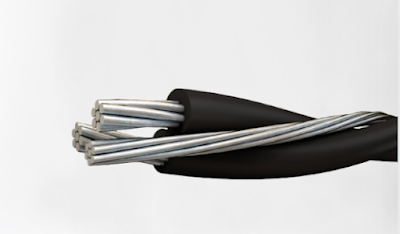Is Capillary Tube Concave or Convex?
Capillary tube are ubiquitous in various scientific and industrial applications, ranging from medical diagnostics to fluid dynamics research. These narrow tubes, typically made of glass or plastic, play a crucial role in processes such as capillary action, chromatography, and microfluidics. However, a common question that arises is whether a capillary tube is concave or convex. In this comprehensive guide, we'll delve into the physics behind capillary tubes and explore whether they exhibit concave or convex curvature.
Understanding Capillary Action:
Before diving into the curvature of capillary tubes, it's essential to understand the phenomenon of capillary action. Capillary action refers to the ability of a liquid to flow in narrow spaces without the assistance of external forces, such as gravity. This phenomenon occurs due to the combination of adhesive and cohesive forces between the liquid molecules and the surface of the tube.
When a capillary tube is placed in a liquid, the liquid molecules adhere to the inner surface of the tube (adhesion) and to each other (cohesion). As a result, the liquid rises or falls within the tube, depending on the balance between these forces and the surface tension of the liquid. This capillary rise or fall is governed by the Young-Laplace equation, which relates the curvature of the meniscus to the surface tension of the liquid and the contact angle with the tube surface.
Concave or Convex: The Curvature of Capillary Tubes:
Now, let's address the question of whether a capillary tube is concave or convex. In reality, the curvature of the meniscus formed by a liquid in a capillary tube can vary depending on several factors, including the properties of the liquid, the material and dimensions of the tube, and the surrounding conditions such as temperature and pressure.
In general, when a liquid wets the inner surface of the capillary tube (i.e., the contact angle is less than 90 degrees), the meniscus formed by the liquid is concave. This concave meniscus occurs because the adhesive forces between the liquid and the tube surface are stronger than the cohesive forces between the liquid molecules. As a result, the liquid is pulled upward along the walls of the tube, causing the meniscus to curve inward.
Conversely, when a liquid does not wet the inner surface of the capillary tube (i.e., the contact angle is greater than 90 degrees), the meniscus formed by the liquid is convex. In this case, the cohesive forces between the liquid molecules are stronger than the adhesive forces between the liquid and the tube surface. As a result, the liquid tends to pull away from the walls of the tube, causing the meniscus to curve outward.
Factors Affecting Meniscus Curvature:
Several factors can influence the curvature of the meniscus in a capillary tube:
- Surface Tension: The surface tension of the liquid plays a crucial role in determining the shape of the meniscus. Higher surface tension tends to result in a more pronounced curvature, whether concave or convex.
- Contact Angle: The contact angle between the liquid and the tube surface is another critical factor. A smaller contact angle (less than 90 degrees) typically leads to a concave meniscus, while a larger contact angle (greater than 90 degrees) results in a convex meniscus.
- Tube Diameter: The diameter of the capillary tube also influences the curvature of the meniscus. Smaller-diameter tubes tend to exhibit more pronounced curvature due to the increased surface tension effects.
- Liquid Properties: The properties of the liquid, such as viscosity and density, can affect the shape of the meniscus. Additionally, the presence of impurities or surfactants in the liquid may alter its wetting behavior and, consequently, the curvature of the meniscus.
Applications of Capillary Tubes:
- Capillary tubes find applications across various fields, including:
- Medical Diagnostics: Capillary tubes are used in blood collection and analysis, as well as in techniques such as capillary electrophoresis and immunoassays.
- Chemistry and Biology: Capillary tubes are employed in chromatography techniques for separating and analyzing complex mixtures of substances.
- Microfluidics: Capillary tubes play a vital role in microfluidic devices for handling and manipulating small volumes of liquids in applications such as lab-on-a-chip systems and point-of-care diagnostics.
Conclusion:
In conclusion, the curvature of a capillary tube depends on a combination of factors, including the properties of the liquid, the material and dimensions of the tube, and the surrounding conditions. While a concave meniscus is typically observed when the liquid wets the inner surface of the tube, a convex meniscus may occur when the liquid does not wet the surface. Understanding the physics behind capillary action and meniscus curvature is essential for various scientific and industrial applications where capillary tubes are employed.



Comments
Post a Comment